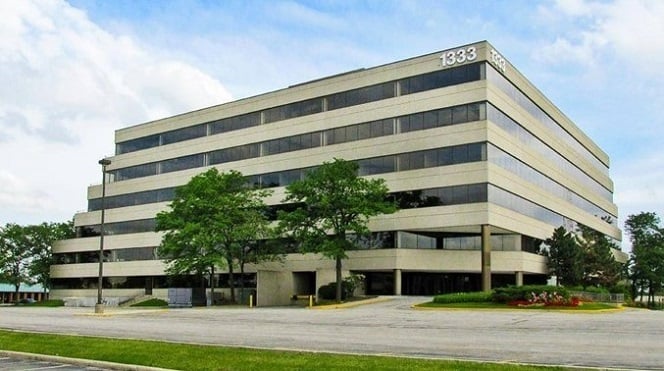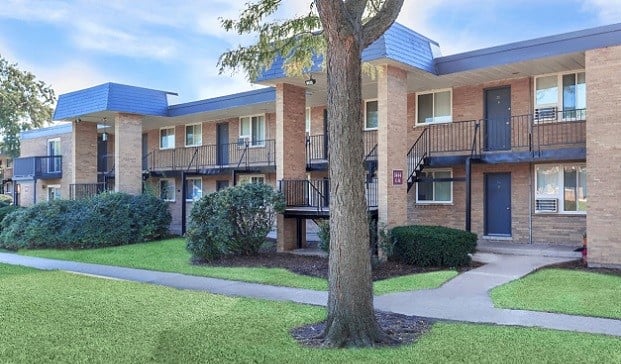
CHICAGO—Developers are launching new luxury apartment developments at a vigorous pace in many of the nation's largest cities. That means the competition to attract and retain tenants is going to get intense. And many developers and designers say they are working harder than ever to make their properties distinctive, with amenities at the forefront.
All owners want something unique but marketable, and finding the correct mix is now more challenging as the wave of new luxury rental properties now hitting the market has helped change the profile of renters. In the past, renters were typically those that did not have the financial means to own a home. But today's luxury apartment communities are home to individuals who choose to rent rather than own, and many want the kind of amenities found in five-star hotels.
“It's been like an arms race,” Rick Whitney, principal at FitzGerald Associates Architects, tells GlobeSt.com. The Chicago-based firm has gathered data on the last ten multifamily projects it designed in the Chicago area, all completed since 2011, and found that amenities once “high end” are now considered standard in class A buildings. These include outdoor swimming pools, fire pits, grilling stations, media-filled lounges, billiards rooms, individual and small-group workspaces and storage lockers. The challenge for developers now is to discover “the differentiators” that will attract and retain high-paying tenants.
“We try to put in amenities that are missing from the surrounding neighborhood,” says Jess Ultreras, an interior designer with FitzGerald. That's especially key for projects located within a city's CBD, many of which are attracting thousands of new residents, but may not have the same level of services as more established residential neighborhoods.
FitzGerald is the architect for the conversion of an existing 13-story office building in the heart of Chicago's Loop, most recently known as Barrister Hall, into The Millennium at LaSalle, a 216-unit luxury apartment tower. Originally built in 1902, it will offer studio, one- and two-bedroom residences. In addition to a full suite of amenities including a lounge area, fitness room, and a new roof deck and outdoor pool, Fitzgerald is also adding differentiators like a bike repair shop and a band “jam” room with recording studio. “We have not seen that anywhere else in the market,” says Ultreras.
The most important quality needed by amenity space is flexibility, she adds. Many luxury apartment buildings used to include theater spaces, for example, but the proliferation of giant flat screen TVs means residents can have a theater-like experience in their own apartments. As a result, “those spaces are not really being used,” and are very difficult to repurpose. The lesson learned is “don't pigeonhole a room.”
Ultreras believes that developers and designers also need to focus on providing residents with the technology which can connect them to their office jobs. Devices like iPhones have blended the once-separate worlds of work and home, and including a WeWork-style co-working space, and not just a business center, could become standard in the next few years.
Tom Fennell of FitzGerald says the proliferation of these devices should also change how developers think about the amenities within their residents' apartments. The use of technology is now a lifestyle, and people increasingly expect to have the ability to remotely control their units' lighting, thermostats, HVAC, audio systems and much more. “The device that everyone is carrying in their pocket can control it all.”
FitzGerald Associates points to Arkadia Tower, a 35-story, 350-unit luxury tower recently developed by White Oak Realty Partners in Chicago's West Loop, as a prime example of the amenity arms race. At the pre-recession start of the project, the developer had dedicated a minimal amount of space for amenities, which were limited to a deck on top of a parking garage. During the construction process, the developer recognized the need to substantially expand the amenity offering in order to compete with other new supply. By the time the project was completed in 2015, FitzGerald had designed an amenity space that spanned more than half a floor and included a 24,000-square-foot outdoor sundeck with a pool, cabanas, grilling stations and seating areas; outdoor yoga studio; dining room; party room with chef's kitchen; technology room with coffee bar; game room; private dog run and grooming station; and state-of-the-art fitness center.
“Renting is not like it used to be,” says Ultreras. People are putting off purchasing homes and staying in rental communities for much longer than in the past. Therefore, the question that owners need to ask is, “how can we make this feel like home?”

CHICAGO—Developers are launching new luxury apartment developments at a vigorous pace in many of the nation's largest cities. That means the competition to attract and retain tenants is going to get intense. And many developers and designers say they are working harder than ever to make their properties distinctive, with amenities at the forefront.
All owners want something unique but marketable, and finding the correct mix is now more challenging as the wave of new luxury rental properties now hitting the market has helped change the profile of renters. In the past, renters were typically those that did not have the financial means to own a home. But today's luxury apartment communities are home to individuals who choose to rent rather than own, and many want the kind of amenities found in five-star hotels.
“It's been like an arms race,” Rick Whitney, principal at FitzGerald Associates Architects, tells GlobeSt.com. The Chicago-based firm has gathered data on the last ten multifamily projects it designed in the Chicago area, all completed since 2011, and found that amenities once “high end” are now considered standard in class A buildings. These include outdoor swimming pools, fire pits, grilling stations, media-filled lounges, billiards rooms, individual and small-group workspaces and storage lockers. The challenge for developers now is to discover “the differentiators” that will attract and retain high-paying tenants.
“We try to put in amenities that are missing from the surrounding neighborhood,” says Jess Ultreras, an interior designer with FitzGerald. That's especially key for projects located within a city's CBD, many of which are attracting thousands of new residents, but may not have the same level of services as more established residential neighborhoods.
FitzGerald is the architect for the conversion of an existing 13-story office building in the heart of Chicago's Loop, most recently known as Barrister Hall, into The Millennium at LaSalle, a 216-unit luxury apartment tower. Originally built in 1902, it will offer studio, one- and two-bedroom residences. In addition to a full suite of amenities including a lounge area, fitness room, and a new roof deck and outdoor pool, Fitzgerald is also adding differentiators like a bike repair shop and a band “jam” room with recording studio. “We have not seen that anywhere else in the market,” says Ultreras.
The most important quality needed by amenity space is flexibility, she adds. Many luxury apartment buildings used to include theater spaces, for example, but the proliferation of giant flat screen TVs means residents can have a theater-like experience in their own apartments. As a result, “those spaces are not really being used,” and are very difficult to repurpose. The lesson learned is “don't pigeonhole a room.”
Ultreras believes that developers and designers also need to focus on providing residents with the technology which can connect them to their office jobs. Devices like iPhones have blended the once-separate worlds of work and home, and including a WeWork-style co-working space, and not just a business center, could become standard in the next few years.
Tom Fennell of FitzGerald says the proliferation of these devices should also change how developers think about the amenities within their residents' apartments. The use of technology is now a lifestyle, and people increasingly expect to have the ability to remotely control their units' lighting, thermostats, HVAC, audio systems and much more. “The device that everyone is carrying in their pocket can control it all.”
FitzGerald Associates points to Arkadia Tower, a 35-story, 350-unit luxury tower recently developed by White Oak Realty Partners in Chicago's West Loop, as a prime example of the amenity arms race. At the pre-recession start of the project, the developer had dedicated a minimal amount of space for amenities, which were limited to a deck on top of a parking garage. During the construction process, the developer recognized the need to substantially expand the amenity offering in order to compete with other new supply. By the time the project was completed in 2015, FitzGerald had designed an amenity space that spanned more than half a floor and included a 24,000-square-foot outdoor sundeck with a pool, cabanas, grilling stations and seating areas; outdoor yoga studio; dining room; party room with chef's kitchen; technology room with coffee bar; game room; private dog run and grooming station; and state-of-the-art fitness center.
“Renting is not like it used to be,” says Ultreras. People are putting off purchasing homes and staying in rental communities for much longer than in the past. Therefore, the question that owners need to ask is, “how can we make this feel like home?”
Want to continue reading?
Become a Free ALM Digital Reader.
Once you are an ALM Digital Member, you’ll receive:
- Breaking commercial real estate news and analysis, on-site and via our newsletters and custom alerts
- Educational webcasts, white papers, and ebooks from industry thought leaders
- Critical coverage of the property casualty insurance and financial advisory markets on our other ALM sites, PropertyCasualty360 and ThinkAdvisor
Already have an account? Sign In Now
*May exclude premium content© 2025 ALM Global, LLC, All Rights Reserved. Request academic re-use from www.copyright.com. All other uses, submit a request to [email protected]. For more information visit Asset & Logo Licensing.








